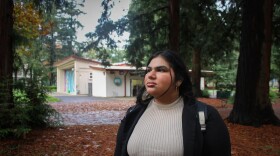Coronado and Imperial Beach are about as opposite as two California beach communities can be. One exclusive, wealthy, Republican leaning. The other working class, Democratic, not-so-long-ago affordable and not too high on most vacation lists.
But they do share one key fact: Neither permitted a single unit of affordable housing between 2018 and the end of last year, according to an analysis by Voice of San Diego and KPBS.
Even Del Mar, which is much smaller and has a reputation for being openly hostile to home building, permitted 74 homes that are considered affordable during the same period.
Cities that want to build affordable housing must have “the money and the will,” said Stephen Russell, CEO of the San Diego Housing Federation, a group that represents affordable home builders.
Imperial Beach and Coronado are in opposite positions, said Russell. One has more will and less money. The other has more money, but not much will.
“They are one of the richest and one of the poorest coastal communities in the county,” Russell said. “Imperial Beach wants more affordable housing … Coronado does not have the will to do affordable housing.”
Affordable housing comes in two main types: the subsidized kind and the naturally-occurring kind, frequently referred to as capital-“A” affordable housing small-“a” affordable housing.
Cities report both types to the state Department of Housing and Community Development each year.
In the case of Coronado and Imperial Beach, they reported neither naturally-occurring or subsidized affordable housing between 2018 and 2024. The only new homes permitted in both jurisdictions were for people with “above moderate” income.
I asked the mayor of Imperial Beach Paloma Aguirre and a former mayor of Coronado about the findings.
Aguirre was recently elected to the County Board of Supervisors but has not been sworn into the new role yet.
“I’ve fought across the board to make housing more affordable,” Aguirre wrote in a statement sent by one of her campaign staffers. “The biggest challenge for small cities like Imperial Beach isn’t a lack of will to build affordable housing but a lack of funding.”
Tyler Foltz, the city manager of Imperial Beach, also pointed out that some affordable housing projects have been approved in recent years.
The projects would create dozens of affordable units, Foltz said, but so far the developers on those projects have not taken the step of applying for building permits.
In housing jargon, the projects have been “entitled” rather than permitted. That means they have all the necessary approvals from the city to proceed, but do not yet have building permits.
For one reason or another, the builders involved in those projects haven’t proceeded to the next step of getting building permits — as they have in other cities across the county.
“Following entitlement, it is the responsibility of the developer to finance and construct the projects,” Foltz wrote in an email.

Richard Bailey was Coronado’s mayor between 2018 and the end of 2024, the time frame of Voice’s analysis.
Bailey said that Coronado, because it is expensive, is not an ideal place to build affordable housing.
“I wouldn’t say Coronado is hostile to subsidized housing, we’re just realists,” Bailey wrote in a text. “The reality is that there is no good or cheap way to build below-market rate housing which is why it hasn’t been effective in higher priced areas throughout California — it’s just the economics of development.”
Bailey said that it is cheaper to build in poorer parts of San Diego and so it makes the most sense to build affordable housing in those areas where it is cheaper to build.
But progressive housing advocates have a problem with that theory: If all affordable housing gets built in poorer parts of town then a disturbing cycle is perpetuated. Poor people are packed into parts of town with less access to good parks, schools and jobs. Rich communities get richer and poor communities poorer.
San Diego County, like most of California, is far away from creating enough houses to support the population. Demand for housing far outpaces supply, which has led to head-spinning price increases.
Within the building that has happened, affordable housing makes up a relatively small portion.
During the six-year window analyzed by Voice, roughly 83,000 new homes were permitted countywide. Of those, roughly 22% were priced for people with moderate income or below.







